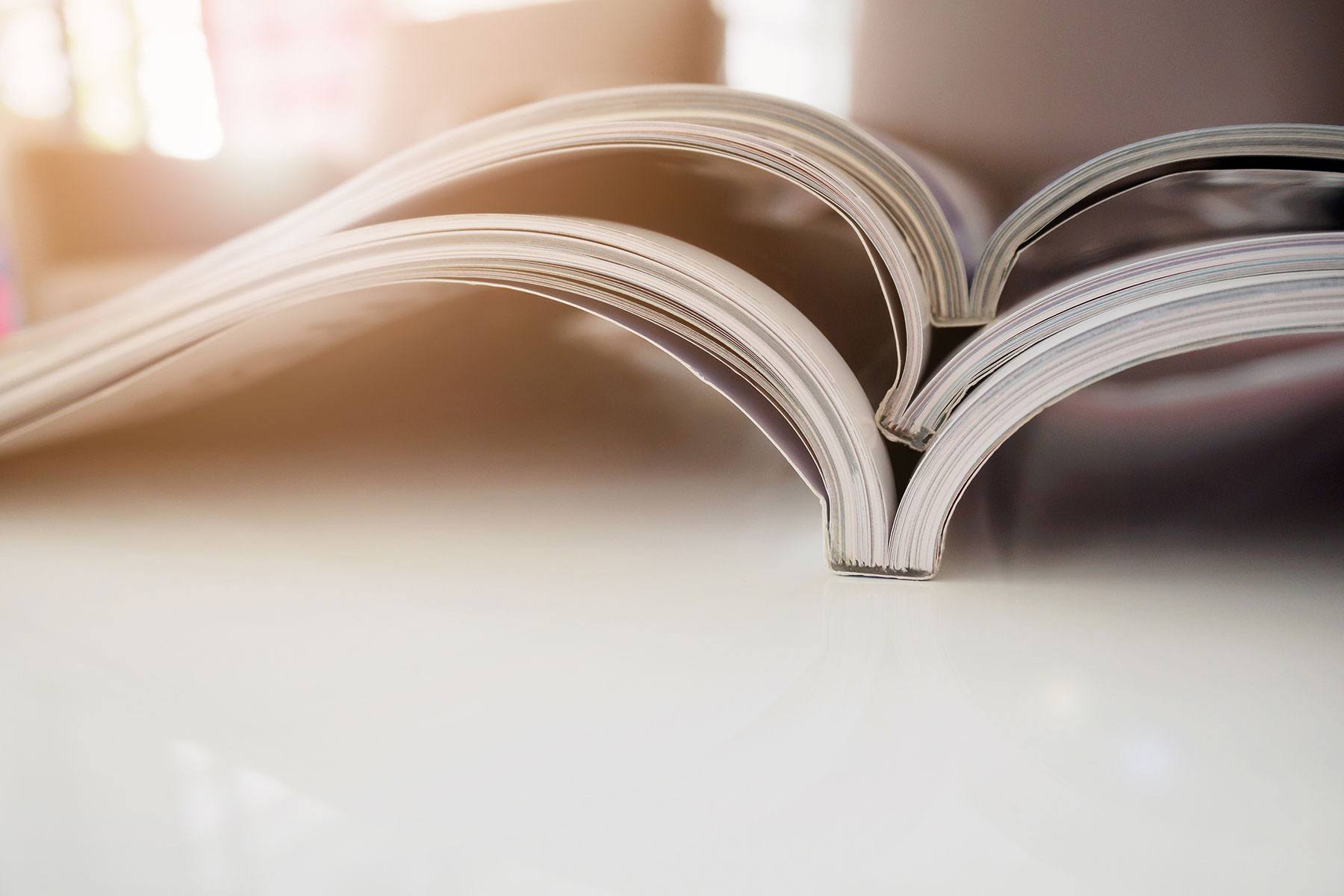If you are thinking of printing a booklet, a catalogue or anything else that involves multiple pages held together, you need to look into your bindery options. Although bindery seems like a pretty straightforward process, there is more to binding than gluing pages together. Here is a quick summary on different binding methods. Each one is designed for a different look and application and comes with its pros and cons:
Saddle-stitching
is a method of securing loose printed pages with staples down the middle of a folded sheaf of papers. Many booklets are saddled-stitched. Side-stitching is a similar method where the pages are stapled near the spine. This is a cost effective way to attach up to 40 pages and can save quite a bit.
Pros: very cost efficient.
Cons: size limitations.
Comb Binding
is the most common binding style used in North America and has been around for more than 40 years, is simple and readily available. Plastic comb binding books have the ability to open flat for easy copying and can be easily opened and closed with a comb binding machine for editing purposes. Plastic comb bindings are available in several colours and in sizes up to 2”. Comb binding is the most economical outside of Saddle Stitching.
Pros: inexpensive step up from saddle stitching.
Cons: not as sturdy as coil or twin loop wire binding and if your presentation is for repeated use, may not hold up long term because the teeth break off.
Coil Binding
is a great option for individuals searching for a different look for their presentations and proposals. Spiral coil binding involves winding a single piece of pre-coiled plastic binding onto the edge of your book. Spiral coil binding is available in more than 60 different colours making it ideal for marketing firms and designers that are looking to match unique colours with company logos or report covers. Coil bound documents can open flat and can also wrap around for easy copying and reading. Documents bound with coil binding are ideal for documents that need to be mailed since the spines are flexible and retain their shape exceptionally well. Although spiral coil binding is available in sizes up to 2”, coil binding documents that are larger than 1” can be very difficult. Binding supplies for coil binding are more expensive than plastic comb bindings but are still reasonably priced and readily available.
Pros: these are usually the most economical and sturdy for documents that you need to last.
Cons: costs a little more than plastic comb.
Twin Loop Wire Binding
is a popular binding style available for individuals who want a professional and durable bind. Twin loop wire binding comes out of the package in a C shape and a wire binding machine is used to close the wire binding so that it is round. Twin loop wire binding provides an elegant look and feel but is slightly more expensive than coil binding or wire binding. Depending on the use, this is often worth the extra cost. Twin loop wire binding has all of the advantages of coil binding above.
Pros: slick and sturdy look.
Cons: don’t lay heavy loads on top of your presentations, you might bend the wire which makes the pages harder to turn.
Perfect Binding
is the type you see on paperback books. This type of binding looks awesome and is available for presentations and books. Well-kept secret: you can perfect bind anything is you use a digital print shop. You can even self-publish a book and make it look really professional!
Pros: stacks nice and neat, looks awesome and great for larger presentations.
Cons: Permanent – no removing pages and doesn’t lay flat, not as sturdy as other options.
If you have any questions about bindery or need a quote on an upcoming bindery project, feel free to contact us to talk to a bindery professional.



